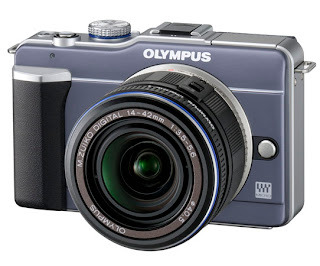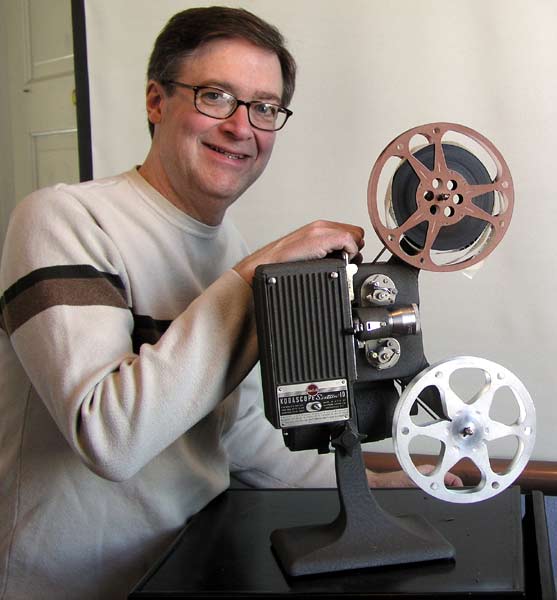
I've crawled my way through the ranks with digital cameras. First was a Kodak, I believe it was a DC20. It took 8 (yes, eight) "high resolution" photos (which I believe were 493 x 373 pixels) before you had to plug it into your computer and download the images (no memory cards yet). At the time, I was just amazed to take a picture with no film! After dropping it on the cement garage floor it ceased to function. In desperation, urgently needing a camera right away, I dashed to Walmart to buy any digital camera that said it would work with a Mac. Came home with a Casio. Don't remember the details but moved up to about one megapixel! Then I moved up to an Olympus C5050 (A very nice camera with many unique features) then the Canon S3is, then in 2009 the Canon SX20is. I've been a sucker for the compact, all in one, do everything super zooms.
Until I saw the Olympus digital Pen. I've loved the Olympus Pens since back in the film days. Half frame rangefinders and SLR's. Cute, solid, functional. Heck, I still have one. I looked at the first digital Pen models at the camera shop. They felt like REAL cameras. They're expensive, have interchangeable lenses, and a lot of other fun features, but NO FLASH! OK, so I'm spoiled. Even if it's not a big powerful flash, I need to have SOME firepower in the light department built into my camera. Then came the E-PL1. It's not quite as traditional looking as the other digital Pen models, but it was a bit cheaper, and had FLASH!
OK, so to get to the point, a blue bodied E-PL1 is now in my camera aresenal. Came with the 14-42mm kit zoom (28-84mm in 35mm speak). I studied the manual for days. I was intimidated by it actually. There are a lot of settings. A lot of user preferences that can be set. Enough that reading the book over and over even left me feeling a bit unenthusiastic about using this camera. Phooey, says I. I put the darn thing on automatic (actually iAuto) and started taking pictures. This is clearly the best way to learn this or any other camera. I just want to share some observations.
This camera FEELS like a camera should. I like being able to zoom without pressing an electronic button and bumping it back and forth to get what I want. You zoom turning the lens barrel. I've actually read reviews posted on online retailers web sites where buyers are complaining the camera doesn't have a powerful enough zoom, or NO zoom (if they got it with the 17mm prime lens). This leads me to believe that people don't realize that the choice of lens is different than the choice of camera and perhaps they should have stayed with something more basic. The various buttons, menus and controls are quite a bit different than other cameras I've had so it takes some getting used to if you've been on the compact super zoom point and shoot train for a while.
I have this theory -- there's no such thing as too much resolution, so I have the camera set for the highest it has available, with minimal compression. This makes HUGE photo files and after each shot it takes 5-6 SECONDS for the images to save to the memory card. This improves if I set it to a more reasonable setting but darn it -- if I can HAVE that much resolution, I WANT it! Originally I had 4 meg SDHC cards that were class 2. I got some class 6 cards and that helped a bit. So I found myself taking a shot, not sure if I caught "the moment" and then having to wait to shoot again, which is frustrating. However, in continuous mode the camera will fire off several shots quickly so you get the shot, but then wait while it writes 4 or more shots to the card. Get fast cards. Or don't be a resolution hog.
Image quality is amazing. I'm sure this is no big bulletin to DSLR users, but for me, using the compact super zooms up until now with their teeny sensors jammed with pixels, it's AMAZING what a larger sensor will do for image quality, especially shooting in low available light! The E-PL1 on auto chooses the ISO necessary to get the job done. At a wedding I just attended, I shot a few frames in available light, noticed the camera was selecting ISO 1600, and I thought "Holy crap, that's gonna be bad". The images are delightful. Far FAR superior to anything my Canon SX20is would have done in the same light. Compared to a super zoom compact these images are bright, full, rich, thick and creamy. The difference is surprising. Don't let megapixels fool you. Both this and my Canon are in the 12 megapixel arena, the larger sensor in the Olympus makes FAR better pictures. Jamming all those megapixels on those teeny sensors in the compacts is an evil practice used by makers to impress you with pixels rather than performance.
Of course, with the E-PL1 not being an "it's all crammed into one camera" miracle box, I'm gonna have to invest in some spendy accessories. It's a small camera. it seems a bit odd with the zoom on the front. I MUST get a "pancake" lens for snapshot and street shooting. My initial plan was the Olympus 17mm 2.8, however the Panasonic 20mm 1.7 has FAR superior test results in all reviews, so that's going to have to be the one. Then I'm going to need a biggie zoom of some sort for shooting airshows, etc, but I haven't even begun researching that yet.
Oh, and of course this camera shoots HD video. Built in mic is mono. But there's a nifty, reasonably priced stereo mic that plugs into the accessory socket and mounts in the hotshoe. Speaking of the hotshoe, a nice array of Olympus flash units work with this camera, AND it supports wireless flash triggering! This same mount/socket can also be used for the optional (and expensive) electronic viewfinder -- if you don't want to use the LCD screen for everything. The accessory viewfinder tilts up to make it easier when you're working at odd angles. Another feature I gave up from the compact super zooms -- no tilting articulated viewing screen.
The camera has an HDMI output, so you can watch right on your HD TV from the camera, photos or videos. Depending on your TV outfit, you can even use your TV remote to control the camera to change pictures (much like a vintage slide projector remote, except no wires!)
After using the super compacts for all of my previous digital life, I'm finding the E-PL1 to be much more like a traditional camera. You'll want accessories, and a nice gadget bag.
Oh geeze! Lets not forget about less important things like the ART FILTERS! Want grainy black and white? Soft focus? Punchy artsy color? Just dial it up, man. And they work in movie mode too! I've found the soft focus effect very nice for some portraits. Certainly these are not necessary, but they ARE fun.
Oh, did I mention the camera also shoots in RAW, or RAW + jpeg? I've never used RAW mode on any camera, and probably won't. Reviews have said that the jpeg engine in the E-PL1 is SO good that the jpegs are astounding on their own, and RAW is only really necessary if you've planned some after the fact tweaking that requires a RAW file.
I've found the auto white balance to be more accurate and -- well, white -- than that in other cameras I've owned. Also I take a lot of product photos for ebay, and can now get away with a white curved paper backdrop with fluorescent shop lights above for illumination -- the camera goes into a higher ISO, the white balance kicks in, and I get FAR better shots, requiring a lot less Photoshop tweaking, than I EVER did with my compacts. This camera has greatly sped up my product shooting/downloading/posting process.
Take note this SOUNDS like a camera, too. You know how some compacts make NO noise, or you can turn on a fake shutter sound? This has a real shutter, and it makes a real shutter sound. Not as loud as a film SLR, but enough that people will turn around and scowl at you when you fire a burst at a wedding!
The E-PL1 did not come with any software for the Mac. The CD inside was PC only, however Mac software was available on the Olympus web site. Not that you don't NEED this software. You can easily import your pictures, and do what you need with any photo program you prefer, and your Mac probably has iPhoto, etc. in it already. You will probably want to download the little program they have for checking the firmware version for your camera online, as they make improvements and updates. Once you've got it loaded it's an easy process. You plug the camera into your computer, launch the program, and it checks with Olympus and your camera to see that you've got the most recent version installed. The last update made quite an improvement in auto focus speeds.
Breaking one of my own camera rules, the E-PL1 uses a special Olympus Lithium-Ion battery. One comes with the camera of course, but only a foole would not carry a charged spare. They are expensive from Olympus and we all know there can be trouble with cheap third party batteries. I did manage to find two new, authentic Olympus batteries on eBay for about $10 each, compared to the $50 they get for them at Olympus. My intense examination of them has me convinced they are not counterfeit, but you should be aware that you need an oddball battery, and should be prepared to get a spare. A cute little charger comes with the camera. The battery charges from about conked out to full in about 3 hours or so.
All in all, I like it. After reading the manual, I didn't think I would. Using it, and seeing the photos has clearly changed my mind. If you need a camera to point and shoot with and are not used to a more traditional photo experience, this camera may frustrate the heck out of you. But if you're a "real" camera person, you'll be pleased.
Labels: camera review Olympus E-PL1 "digital camera" Pen "Olympus Pen"
 I ran into this photo in an online photo sale, and had to grab it because it so perfectly demonstrates a bad photograph.
I ran into this photo in an online photo sale, and had to grab it because it so perfectly demonstrates a bad photograph.
 I ran into this photo in an online photo sale, and had to grab it because it so perfectly demonstrates a bad photograph.
I ran into this photo in an online photo sale, and had to grab it because it so perfectly demonstrates a bad photograph.


